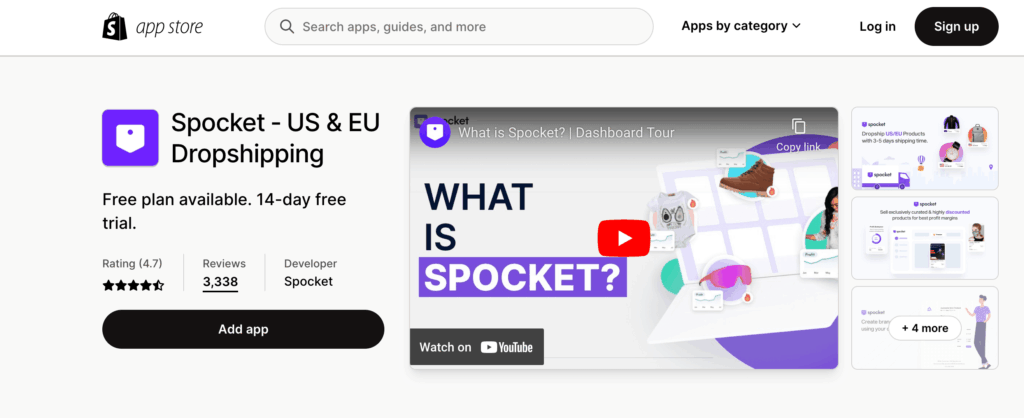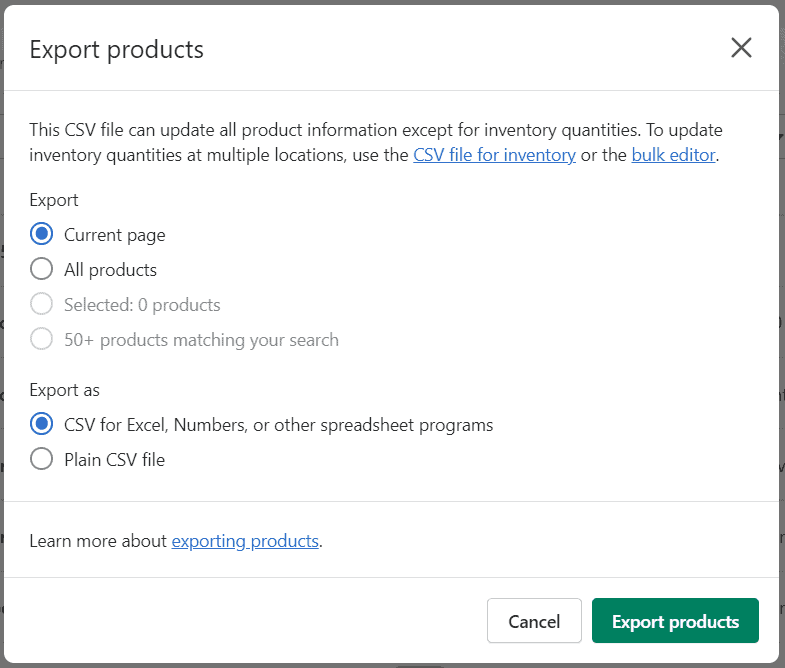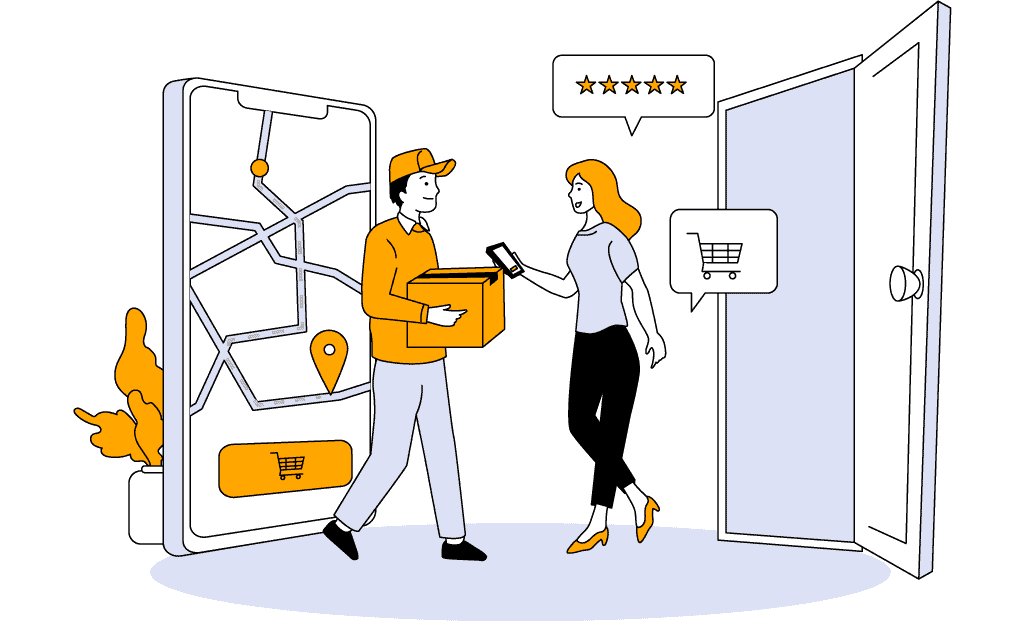Managing dropshipping orders is one part of the dropshipping business model that isn't talked much about.
But how exactly is this achieved?
Well, in this article, we will be discussing the nine-step process for managing your orders when dropshipping.
Let's begin!
9 Steps to manage your dropshipping orders
Here is the nine-step process for managing your dropshipping orders:
1. Find a dropshipping supplier
If you don't yet have a supplier, the first step to properly manage orders is to find a reliable dropshipping supplier.
The supplier manages the fulfillment process within your dropshipping business, and a bad supplier can ruin your business’s reputation.
To start, you can check out some of our supplier lists:
- The 12 Best US Dropshipping Suppliers (Fast Shipping)
- The 15 Best Dropshipping Suppliers for Shopify Stores
- The 15 Best White Label Dropshipping Suppliers
The next way that you can find suppliers for your dropshipping business is to look at your ecommerce platform's app store.
An example of this is on Shopify.
Go to the Shopify App Store and type in something such as 'suppliers' or 'dropshipping suppliers':

As you can see, there are some great options here. Fulfillment partners such as CJdropshipping or Spocket are great options.
Here's another example on BigCommerce:

The last method we will discuss involves using a supplier directory.
Dropshipping supplier directories are basically the middleman that connects you to a supplier.
They do this by providing you with a list of wholesalers, manufacturers, dropshippers, auctioneers, and other types of vendors that you can source and dropship products through.
An awesome example of this is SaleHoo:

If you want to learn more about how to find a supplier, check out our article on that to learn more!
2. Connect with a dropshipping supplier
After finding a dropshipping supplier, you're probably wondering how to connect with that supplier.
There are several common ways to transfer customers' order info back and forth.
The first method involves using an app that will allow you to integrate your ecommerce store with your supplier.
As an example, we will use the Spocket app on Shopify:

Add the app, head over to Spocket, and sign into your account.
After that, click on 'Shop' from the toolbar on the left. Select 'Shopify,' then input your Shopify store URL.

There you go! Now you're connected to a supplier!
If your supplier doesn't offer an integration app, you can still process order information manually via a CSV file.
In other words, after you get a sale, you export the order information and send it to your supplier. They will process and fulfill the order.
Here's an example of how to export order information on Shopify:

You can send the exported CSV file to your supplier, and boom! You've successfully created a channel for you to connect with a supplier!
3. Look at the order information
The next step is to examine the order information to ensure there are no mistakes with any of the information, such as the customer's address.

This will ensure that the order fulfillment process goes smoothly.
4. Capture the payment
Before you move on with the order, you must capture your customer's payment.
By capturing the payment, you're making sure the money is securely transferred from the customer to you.
To capture a payment, you need a reliable payment gateway.
This is an online service that helps you accept and process payments.
Choose one that's known for being secure and user-friendly. Popular options include Shopify Payments, PayPal, and Stripe.

Most ecommerce platforms, including Shopify, will automatically capture the payment once a customer places an order.
However, in some cases, you might have to capture payments manually. This means you go into your online store's dashboard and click a button to confirm each payment.
5. Send the order information to your supplier
With the order paid for, the next step is to make sure your supplier gets your customer's order information.
This step goes hand in hand with connecting with your supplier because it's how you transfer information back and forth with each other.
Sometimes, it's automated where the supplier is integrated into your store with an app, or sometimes, it's a little less automated with something like CSV files.
6. Let your supplier ship the product
Now, this is where the magic of dropshipping really happens!
Once you've got everything sorted with the order and the payment, it's time to step back and let your supplier ship the product.
As soon as you have all the necessary information, send it over to your supplier. The faster they get the details, the quicker they can start the shipping process.
Also, make sure all the information is correct.
Double-check the customer's address and the order details. A tiny mistake here can lead to bigger issues later.
Once your supplier has the order details, they will pack the product and handle all the logistics of shipping. They'll choose the best route, handle any shipping regulations, and make sure the package is on its way to your customer.

7. Update the tracking information
Imagine you've ordered something online.
You're excited, right?
Now, think about how you'd feel if you had no idea where your package was or when it would arrive.
Anxious, maybe?
That's exactly how your customers feel.
So, you must now update the tracking information to provide your customers peace of mind and transparency.
Here is how to update the tracking information:
- Get the tracking number. Your supplier should provide a tracking number for each shipment.
- Update your system. Whether it's on Shopify, an app, or an email system, make sure to input the tracking number as soon as possible. Automation can be a big help here to save time.
- Notify your customer. Send a friendly message or email to your customer with the tracking number and instructions on how to use it. A simple link to the courier's tracking page can be super helpful:

Tip: If you're using PayPal, get an order syncing app like Proveway to automatically sync your tracking numbers with PayPal and avoid money holds!
8. Handle any shipping delays
So, you've sent off the product, and your customer is eagerly waiting.
But what happens if there's bad weather, customs hold-ups, or logistic challenges along the way and the delivery is delayed?
No need to panic!
Shipping delays are common, and how you handle them can really show the strength of your customer service.

The first key point is to be proactive. If you know there's a delay, reach out to your customer before they reach out to you. It shows you're on top of things and care about their experience.
Even if you don't have a solution right away, keep your customers informed about what's happening.
While you can't always fix the delay, you can offer something to make up for the wait. Maybe it's a discount on their next purchase, a small refund, or another gesture.
9. Handle any return or refund requests
Finally, let's talk about a scenario when a customer wasn't happy with their purchase or there was an issue with the product.
Again, it's all about turning a negative experience into a positive one!
Before you send them a refund, try to find out where the refund request is coming from.
Maybe the product wasn't what they expected, or perhaps there was an issue with the quality.
Every return or refund request is an opportunity to learn. Was there an issue with the product that can be fixed? Is there something you can improve in your descriptions or photos to set better expectations?
Either way, you can use this information to improve your store!
Next, follow your store's return and refund policy and process the refund as soon as possible.
You can simplify processing returns and refunds with an app like Loop:

Believe it or not, handling a return or refund well can actually win you a loyal customer.
If they see that you're committed to their satisfaction, they're more likely to come back, knowing they can trust you if anything goes wrong.
How do you handle out-of-stock items?
As a dropshipper, it's your responsibility to handle situations when items your customers want are out of stock.
The first step is to inform them promptly. Nobody likes to be left in the dark, especially after they've spent their money.
A quick, honest message explaining the situation can go a long way.
Once the customer is informed, here are some guidelines on what to do next:
- Recommend similar products. You can suggest similar items that the customer might like.
- Suggest a backorder. If they're determined on this specific item and it will be back in stock soon, offer the option to wait for it. Some customers won't mind the wait.
- Offer a discount or small refund. If the customer decides to wait or choose a different item, a small discount or free shipping on their next purchase can be a nice gesture.
Remember that with the technologies available right now, it's possible to prevent these out-of-stock situations.
To do so, you must ensure that your supplier's inventory is synced with your dropshipping store.
Many dropshipping suppliers will already have such a feature built-in!
For example, take a look at Spocket or any of the other best dropshipping suppliers:

3 Best tools for managing dropshipping orders
Here are the three best tools for managing dropshipping orders:
1. Syncee

Syncee is a tool that can help you automate the process of sending new orders to your suppliers.
When a customer places an order on your website or ecommerce platform, Syncee automatically forwards the order details to your supplier, removing the need for manual order fulfillment.
Syncee also allows you to update stock on your website automatically, edit suppliers' products in bulk, set unique pricing rules, and more!
2. Avada Email Marketing

Avada Email Marketing is a tool that offers a robust set of automation workflows to help increase and manage orders.
Avada can send transactional emails, such as order confirmations and shipping notifications, which provide a professional customer experience.
You can also send customers targeted emails to remind them of their abandoned items and entice them to complete the purchase.
You can also use Avada after a customer purchase to recommend complementary or higher-value products, increasing your average order value.
3. BeProfit

BeProfit offers a set of reporting tools designed to analyze the profit of each dropshipping order and gain deeper insights into the financials of your business.
Taking action
Reading and absorbing information and knowledge is great (definitely if it’s free!), but do you know what’s even better?
Taking action!
So, to help you with taking action with what you have learned in this article, take a look at the bullet points:
- Find a reliable supplier. Your first step in managing dropshipping orders is to find a trustworthy supplier. Take action by conducting thorough research to identify suppliers known for their reliability, product quality, and timely fulfillment.
- Connect and integrate. Once you've chosen a supplier, take action to connect and integrate your ecommerce store with them. Explore available apps or CSV file methods to establish seamless communication for order processing.
- Review and double-check. Before sending order information to your supplier, take proactive action by reviewing all order details. Ensure accuracy and consistency in customer information, shipping addresses, and product selections to prevent potential issues and ensure customer satisfaction.
Conclusion
So there you have it!
That's the nine-step process you need to manage dropshipping orders efficiently and effectively.
We hope that the article has simplified the process of order management for you!
This part of the dropshipping business model doesn't have to be a daunting or scary task or prevent you from starting a dropshipping business in the first place.
With the right knowledge, you can start and scale a successful dropshipping business!
Good luck!
Want to learn more about dropshipping?
Ready to move your dropshipping store to the next level? Check out the articles below:









